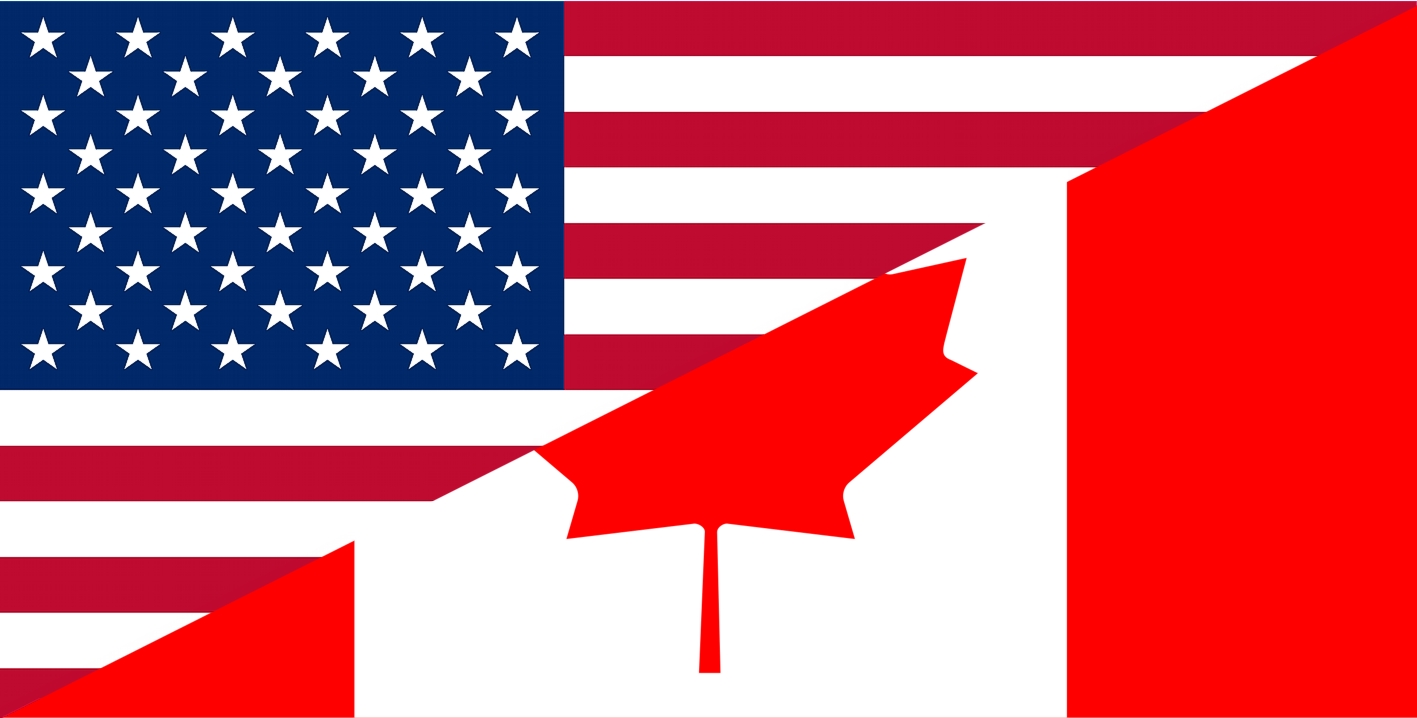The film industry is a vital part of Canada’s economy and cultural identity, with cities like Toronto and Vancouver earning the nickname “Hollywood North” for their bustling production scenes. But recent news from the United States threatens to shake up this thriving sector.
In a surprising announcement, U.S. President Donald Trump revealed plans to impose a 100% tariff on all films produced outside the U.S., including those from Canada. This move aims to protect the American film industry, which Trump claims is struggling due to foreign competition.
However, the potential impact of these tariffs could be far-reaching, putting Canadian film jobs, investments, and collaborations at risk.
Background on the Proposed US Tariffs
In a bold announcement made on his social media platform Truth Social, U.S. President Donald Trump declared plans to impose a sweeping 100% tariff on all movies produced outside the United States. This proposed tariff would apply to every foreign film entering the U.S. market, including a significant number of films produced in Canada.
Trump justified this drastic measure by claiming that the U.S. film industry is “dying” and that other countries are aggressively luring filmmakers and studios with incentives, posing a so-called national security threat.
Despite the announcement’s boldness, many details remain unclear. There is little information about when these tariffs might come into effect or how they would be implemented practically. This uncertainty is fueling anxiety on both sides of the border, particularly among Canadian producers, studios, and workers who rely heavily on cross-border collaborations and access to the U.S. market.
As this situation develops, the ripple effects of such tariffs could disrupt the intricate web of North American film production, potentially reshaping the landscape of the industry for years to come.
Immediate Concerns in Canada’s Film Hubs
The proposed U.S. tariffs are casting a long shadow over Canada’s most active production centres: Toronto and Vancouver. Both cities have become international go-tos for major film and television projects thanks to their world-class crews, diverse locations, and competitive tax incentives.
In 2023 alone, Ontario hosted more than 400 productions, supporting approximately 25,000 jobs and generating $1.8 billion in economic activity. Vancouver’s film industry, similarly robust, employed 26,000 people and contributed $2.7 billion to B.C.’s GDP in 2022.
Local officials and industry leaders are sounding the alarm. Toronto Mayor Olivia Chow expressed deep concern, highlighting the city’s critical role in post-production for major global platforms like Netflix and Disney. “I can’t imagine what it means, what would happen to this industry,” she said, noting that the city facilitates everything from independent films to big-budget blockbusters. (quote from ctvnews.ca)
B.C. Premier David Eby echoed those worries, questioning how such tariffs would be implemented and warning of their broader consequences: “There’s no question that the president is threatening people who work in industries across British Columbia and across Canada.” (quote from northernsentinel.com)
At a time when Canadian cities are being recognized as top destinations for moviemakers, Toronto was recently ranked #1 by MovieMaker Magazine, such disruption could not come at a worse moment.
Voices from the Industry: Reactions from Canadian Creators
The proposed U.S. tariffs have triggered immediate concern from within Canada’s film community, with many describing the move as destabilizing and short-sighted.
Martin Katz, founder and president of Prospero Pictures, called the idea “nonsensical,” warning that it could freeze investments and scare off both American and international partners. “This whole tariff situation is that it will have a chilling effect,” Katz told CTV News Channel. “People don’t know what the law is going to be from one day to the next. What element of the cost of production are you putting a tariff on? How do you calculate this tariff?” (quote from ctvnews.ca)
Filmmaker and actress Aisha Evelyna also weighed in, acknowledging the industry’s existing challenges, particularly after the pandemic and last year’s writers’ strike. “The industry hasn’t been OK since the pandemic,” she said, noting that while 2022 brought a surge in production, uncertainty has grown ever since. (quote from ctvnews.ca)
Still, Evelyna offered a glimmer of hope: “Is it possible this is an opportunity for the industry to be more self-sustainable in Canada, more self-generative? We have to champion us. We have the world here… We have the ability to create really great work and find other markets.” (quote from ctvnews.ca)
Their comments reflect a mixture of anxiety and resilience, an industry worried about external shocks, yet mindful of its own strengths and capacity to adapt.
Potential Economic and Industry Disruptions
Should the proposed 100% U.S. tariffs on foreign-made films come into effect, the ripple effects could be immediate and far-reaching for Canada’s screen sector. As the Canadian Media Producers Association warned, such measures risk “significant disruption and economic hardship” on both sides of the border.
Canada’s film industry is deeply interwoven with Hollywood. Major studios frequently choose Toronto, Vancouver, and other Canadian locations for their affordability, infrastructure, and skilled labour force.
American productions bring billions of dollars into the country, not just in direct production costs, but through hotels, catering, transportation, and local service providers. A tariff could make cross-border collaboration prohibitively expensive, leading studios to cancel or relocate projects that would otherwise have been filmed in Canada.
Beyond the obvious financial losses, the uncertainty could chill future investment. Producers may hesitate to commit to multi-year projects if the tariff landscape remains unstable. Jobs are also at stake. With over 56,000 Canadians employed in Toronto and Vancouver’s film industries alone, even a partial rollback of American productions could lead to significant layoffs.
Moreover, many in the industry fear a cascading effect: if the U.S. imposes tariffs, other countries might follow suit or respond with trade restrictions of their own. Such a shift could hinder the global flow of creative projects, weakening a sector that thrives on international co-productions and partnerships.
Canada’s Potential Response and Adaptation
While the threat of U.S. tariffs looms, Canadian leaders and industry stakeholders are already looking ahead to how the country can respond, both politically and creatively. The immediate reaction from figures like Toronto Mayor Olivia Chow and B.C. Premier David Eby reflects a blend of alarm and determination.
At the federal level, Canada may explore diplomatic avenues to counter or soften the blow of the proposed tariffs. Trade negotiations or exemptions for existing co-productions could be on the table, especially considering the economic interdependence between Canadian and American entertainment industries.
At the industry level, this moment may serve as a wake-up call—a prompt to further invest in self-sufficiency. Actress and filmmaker Aisha Evelyna suggested the possibility of using this disruption to build a more self-sustaining ecosystem in Canada. “We have the world here,” she said, pointing to Canada’s diversity, languages, and talent pool as assets for cultivating a global storytelling hub.
This could mean more domestic funding, expanded distribution pipelines to non-U.S. markets, and greater promotion of Canadian content at international festivals. Canadian film offices may also need to bolster local support systems, create incentives for fully domestic productions, and expand ties with Europe, Asia, and Latin America.
If Canadian content creators can pivot successfully, the tariff threat might ultimately catalyze a new phase of independence and global relevance for the nation’s screen industries.
Exploring Alternative International Markets for Canadian Film
If the United States closes the door to affordable cross-border collaboration through aggressive tariffs, Canada’s film industry may need to pivot toward other international markets to sustain momentum and growth.
Europe represents a natural partner. Through Canada’s existing co-production programs with countries like France, the U.K., Germany, and Ireland, Canadian filmmakers already have a foundation to build on. These agreements allow projects to access funding and tax incentives in both countries; opportunities that could be expanded with stronger strategic alliances.
Asia is another emerging frontier. Countries like South Korea, Japan, and increasingly India are seeing rapid growth in content production and global reach. With Canadian cities offering diverse backdrops and multilingual talent, there is potential to attract non-Western filmmakers looking for international collaboration. At the same time, Canadian producers can explore co-financing and streaming partnerships with Asian studios and OTT platforms.
Latin America also presents untapped possibilities. As Spanish-speaking content gains more traction globally, especially through platforms like Netflix and Prime Video, Canadian creators could develop co-productions that blend North and South American storytelling traditions.
International film festivals such as Berlinale, Cannes, Busan, and Guadalajara may become even more critical for Canadian filmmakers seeking funding, sales agents, or distribution beyond North America. With the right government and industry support, these new avenues could not only offset the impact of U.S. tariffs but also establish Canada as a truly global player in cinema.
Wrapping Up
The proposed 100% tariffs by the U.S. on foreign films mark a turning point for Canada’s film industry. While the policy remains unclear in scope and implementation, its mere announcement has already stirred concern across political, creative, and economic sectors.
Yet, amidst the uncertainty, there is also an opportunity. The moment invites Canada to reflect, regroup, and redefine its position in the global entertainment landscape. By investing more deeply in domestic talent, expanding co-productions with Europe, Asia, and Latin America, and strengthening internal support systems, Canada can become not just a service hub for American productions but a world-class engine for original storytelling.
In the face of geopolitical headwinds, one thing remains clear: Canadian filmmakers, crews, and communities are resilient. This challenge, like others before it, may be the very push that helps the industry grow stronger roots and reach new heights.




